Thinking about bringing a feline friend into your life, but envisioning a cat with a bit more… presence? While the average domestic cat might tip the scales at a modest 8–12 pounds, certain breeds redefine “lap cat” with weights reaching 20 pounds and beyond. These Huge Cat Breeds aren’t just bigger in size; they often bring larger-than-life personalities and unique care considerations to your home. From extra-large cat trees built to withstand their playful antics to carefully managed meal portions to keep them healthy, owning a larger feline is a truly rewarding experience.
If you’re drawn to the idea of a supersized snuggle buddy, get ready to explore ten magnificent huge cat breeds that might just steal your heart.
Key Insights into Huge Cat Breeds
- Forget average! Some huge cat breeds can healthily weigh 20 pounds or more, dwarfing their smaller cousins.
- Providing for a huge cat breed means thinking big: larger, sturdier cat furniture like trees, scratching posts, and spacious litter boxes are essential.
- Maintaining a healthy weight is crucial for these gentle giants. Even in huge breeds, preventing obesity is key to avoiding potential health problems.
1. Maine Coon: The Original Gentle Giant
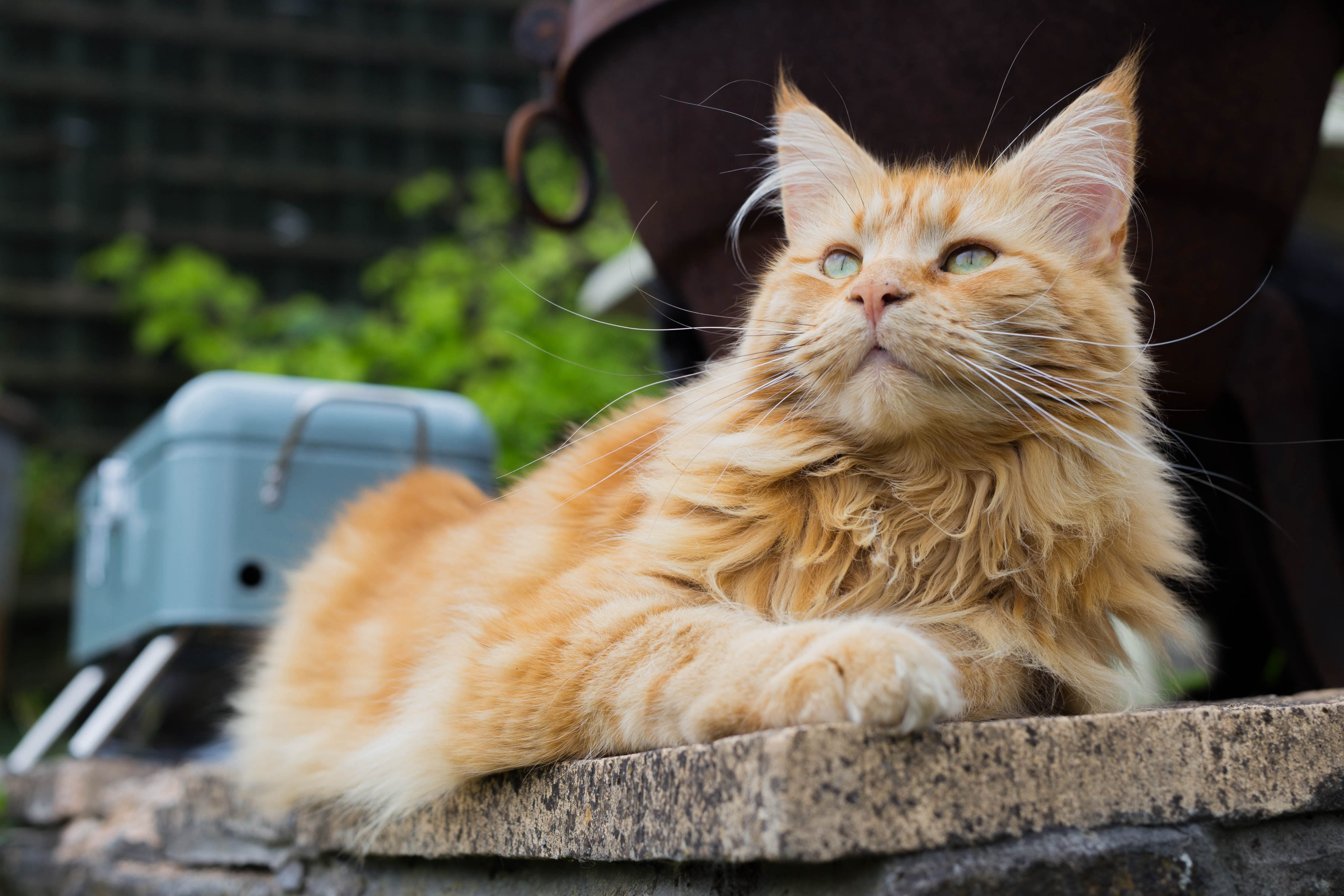 a majestic orange Maine Coon cat lounging, showcasing the quintessential huge cat breed
a majestic orange Maine Coon cat lounging, showcasing the quintessential huge cat breed
Photo by Adobe Stock/Crashin/Wirestock
Weight: 8–18 pounds
The Maine Coon isn’t just big; it’s often considered the quintessential huge cat breed. Renowned for their impressive size and wonderfully friendly nature, Maine Coons are often described as the “dogs of the cat world” due to their loyal and laid-back personalities. This makes them exceptionally well-suited as family pets, often bonding strongly with children and enjoying household activity.
Their substantial size necessitates some adjustments in your home. Maine Coons thrive with spacious litter boxes that accommodate their length and require robust scratching posts that can withstand their powerful scratching habits. It’s also important to be aware that Maine Coons have a predisposition to hip dysplasia. Regular veterinary check-ups are vital for monitoring their joint health proactively.
Consulting with your veterinarian about preventative measures for joint health is a wise step for any Maine Coon owner. Joint supplements can be a beneficial addition to their diet, supporting their long-term mobility and comfort.
2. Norwegian Forest Cat: The Fluffy Climber
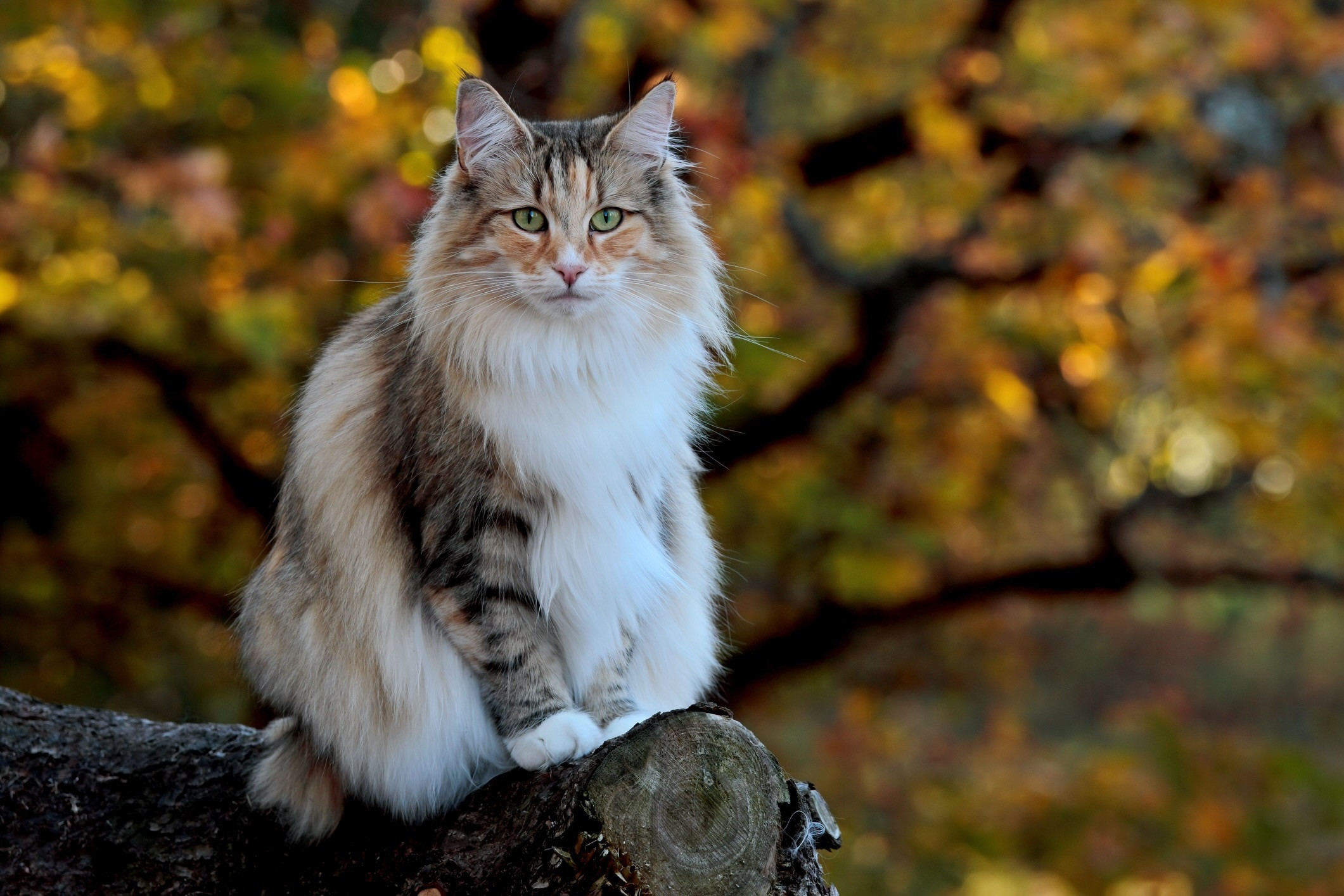 a calico Norwegian Forest Cat, a huge cat breed, perched gracefully on a log in a natural setting
a calico Norwegian Forest Cat, a huge cat breed, perched gracefully on a log in a natural setting
Photo by undefined undefined/iStock / Getty Images Plus via Getty Images
Weight: 12–16 pounds
Don’t underestimate the Norwegian Forest Cat, or “Wegie,” based on their fluffy appearance. Beneath that luxurious coat lies a surprisingly muscular and large cat. As their name suggests, these cats are natural climbers, with an innate agility honed in the forests of Norway. To cater to their climbing instincts, providing sturdy, tall cat trees and secure perches is essential for keeping them happy and active indoors.
While generally robust, their larger size makes Norwegian Forest Cats prone to joint issues like hip dysplasia and arthritis, particularly as they age. Maintaining a healthy weight is paramount for this fluffy huge cat breed to minimize stress on their joints and ensure a long, active life. Regular exercise and a carefully controlled diet are key to their well-being.
3. Siberian: Russia’s Majestic Giant
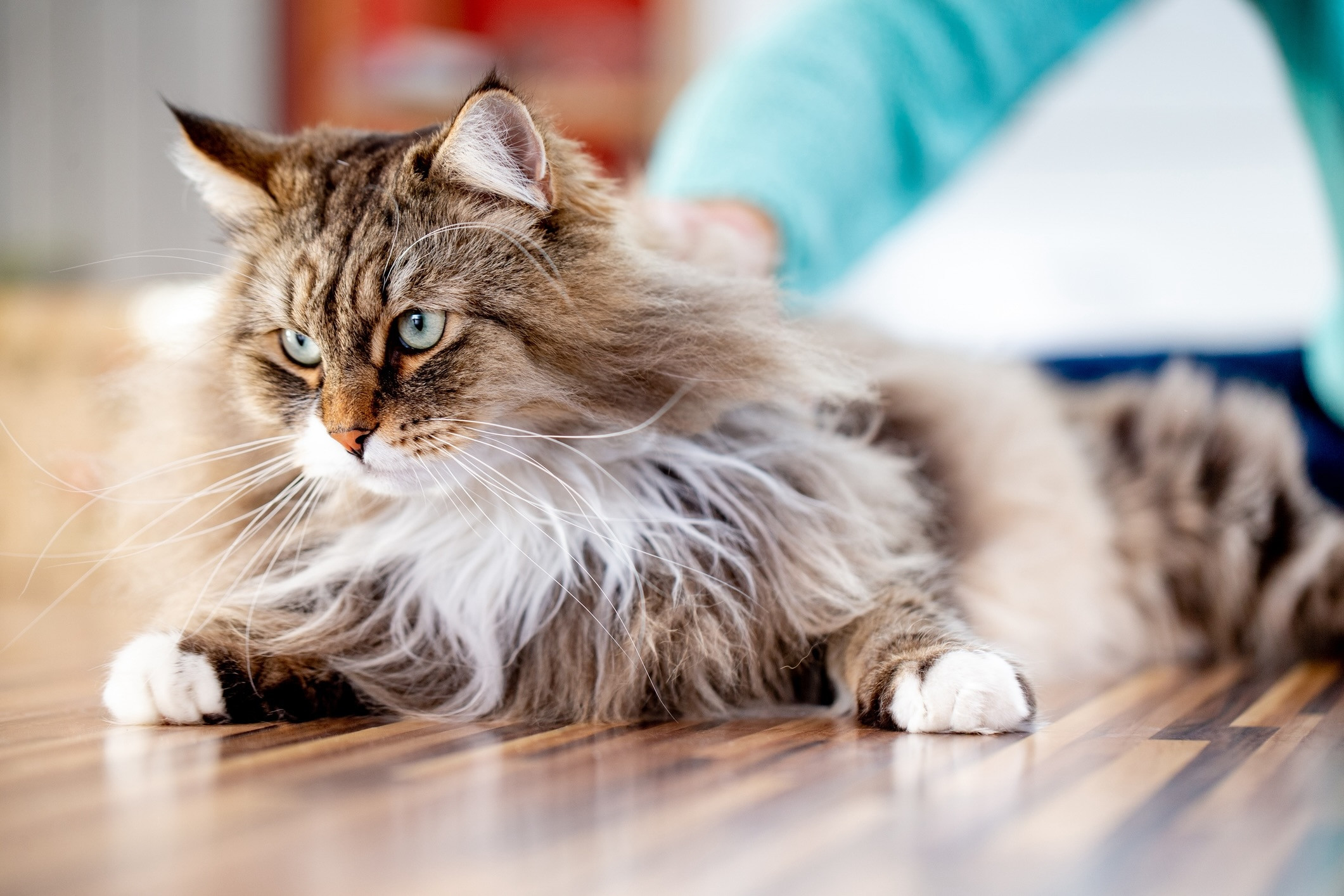 a Siberian cat, a huge cat breed, being affectionately petted while relaxing on the floor
a Siberian cat, a huge cat breed, being affectionately petted while relaxing on the floor
Photo by CasarsaGuru/E+ via Getty Images
Weight: 12–15 pounds
The Siberian, the national cat of Russia, is a breed that exudes both beauty and strength. Distinguished by their magnificent triple coat, necessary for surviving harsh Siberian winters, and striking, expressive eyes, these cats are truly captivating. Interestingly, this huge cat breed is known for its slow maturation, often taking up to five years to reach their full impressive size.
Despite their somewhat cuddly appearance, Siberians can be prone to weight gain if not properly managed. They might prefer a cozy nap to an intense play session, which can increase their risk of obesity. Encouraging daily playtime is crucial for Siberians. Many owners find these intelligent kitties can even be leash trained, offering a fun way to explore the outdoors and stay active. Regularly monitoring their weight will help ensure they maintain a healthy physique.
4. Bengal: The Leopard Look-Alike
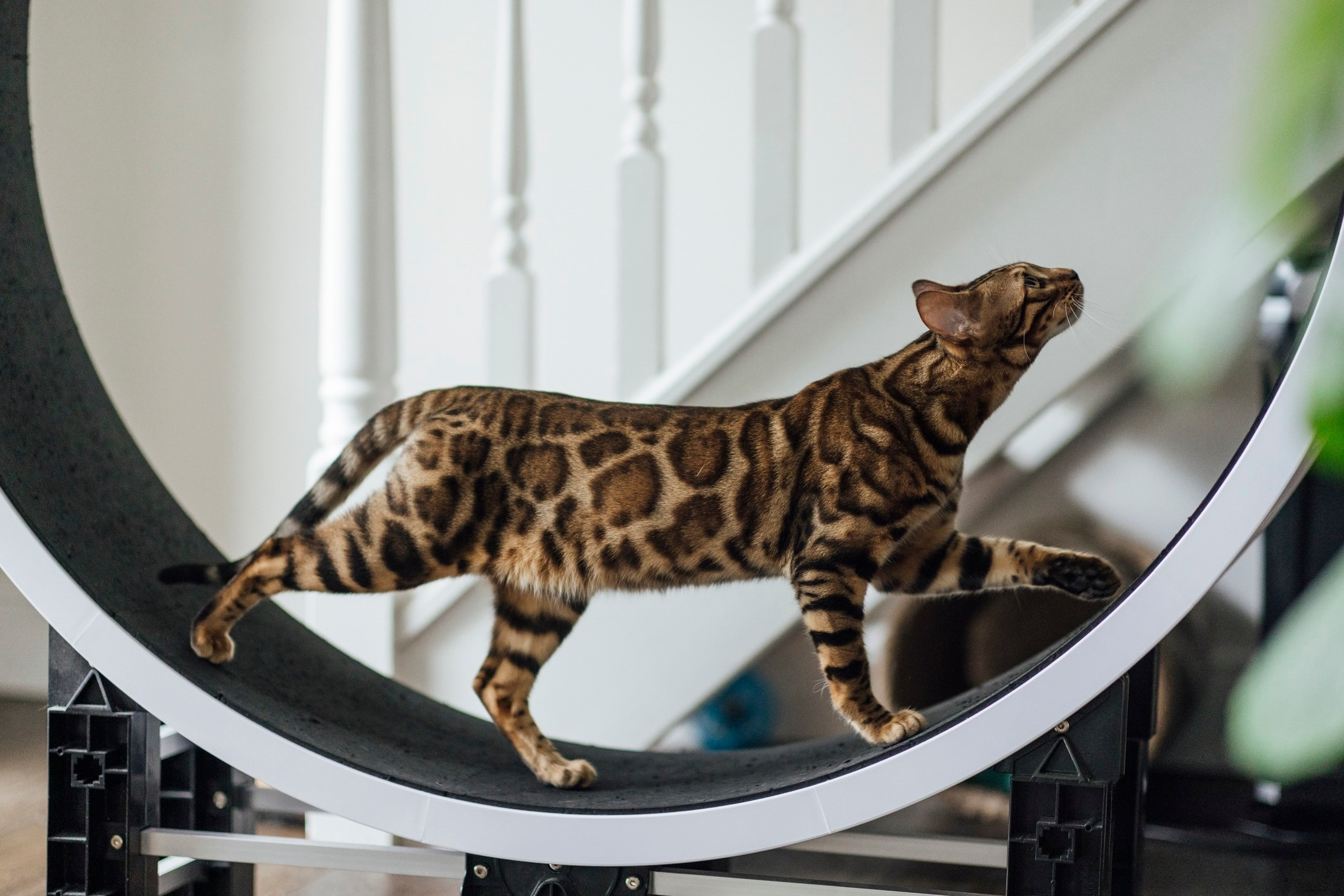 a Bengal cat, a huge cat breed, energetically using a cat exercise wheel in a home setting
a Bengal cat, a huge cat breed, energetically using a cat exercise wheel in a home setting
Photo by SolStock/E+ via Getty Images
Weight: 8–15 pounds
The Bengal cat is a breed that turns heads with its wild appearance, reminiscent of a leopard. Bred to resemble their exotic wild ancestors, Bengals possess a striking spotted or marbled coat and an athletic build. While they enjoy lounging and napping as much as any cat, Bengals are inherently energetic and require ample vertical space to satisfy their jumping and climbing desires.
Bengals have a strong hunting drive and are naturally curious and intelligent. To cater to these instincts, puzzle feeders and treat-dispensing toys are highly recommended. These interactive tools not only provide mental stimulation but also slow down eating, aiding in digestion and preventing overeating. Engaging their predatory instincts through play is key to a happy and well-adjusted Bengal.
5. Savannah: The Tall and Energetic Hybrid
 a Savannah cat, a notably huge cat breed, casually lounging on a chair, displaying its long legs and spotted coat
a Savannah cat, a notably huge cat breed, casually lounging on a chair, displaying its long legs and spotted coat
Photo by Gennadiy Naumov/iStock / Getty Images Plus via Getty Images
Weight: 12–25 pounds
The Savannah cat is truly something special. A fascinating hybrid breed resulting from a cross between an African Serval and a domestic house cat, the Savannah embodies a unique blend of wild beauty and domestic charm. With their striking spotted coats, large ears, and incredibly long legs, they could easily look at home roaming the African Serengeti. Despite their exotic appearance, Savannahs are known for their sweet and affectionate temperaments, paired with a boundless energy.
One of the most remarkable traits of the Savannah is their impressive jumping ability – they can leap up to 8 feet in the air! To accommodate this incredible athleticism, Savannah owners need to invest in extremely durable and tall cat trees, as well as install secure wall shelves to provide safe climbing routes and high vantage points. These cats thrive on activity and interaction, making them engaging and entertaining companions for active owners.
6. Ragdoll: The Gentle Giant with Blue Eyes
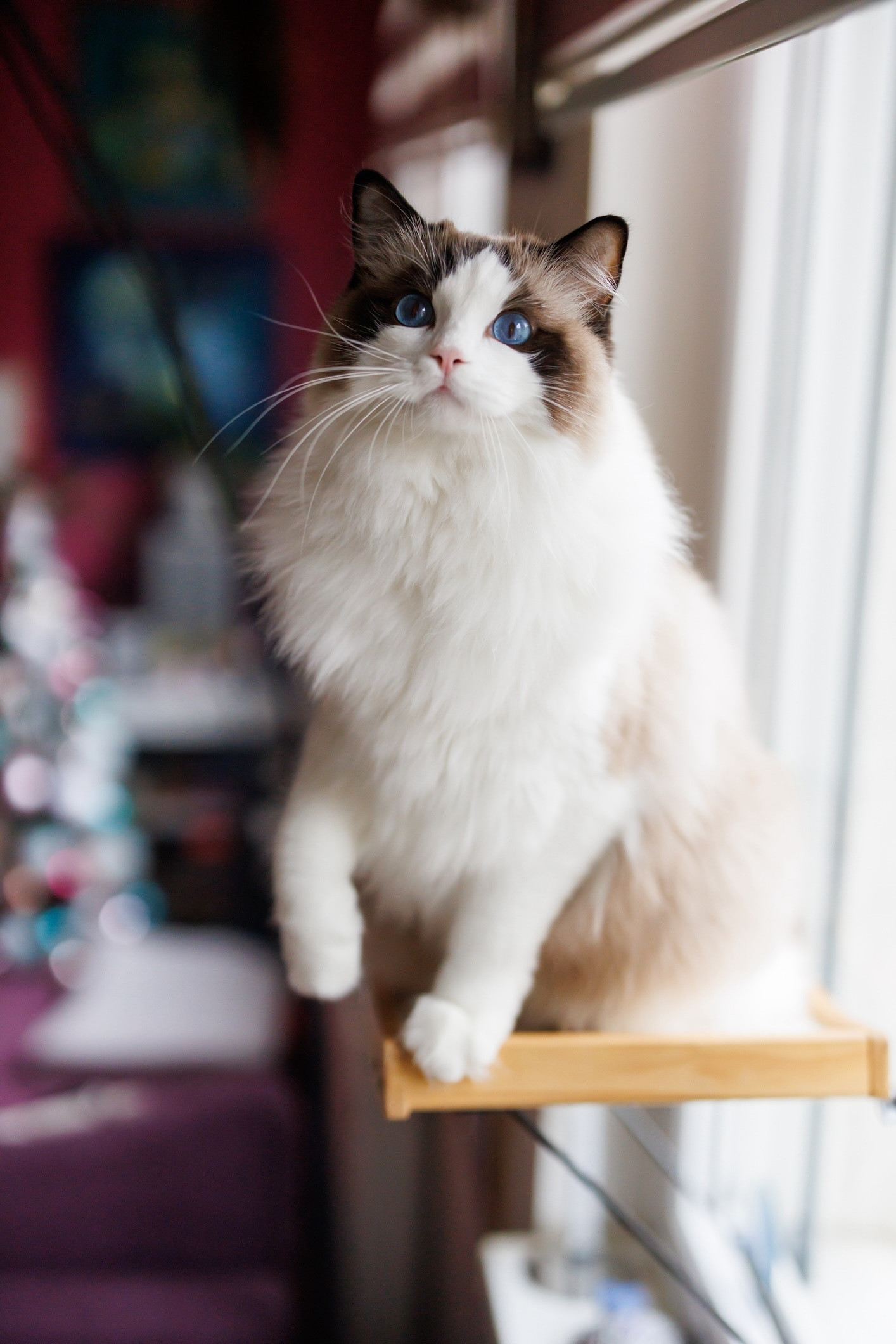 a Ragdoll cat, a large and fluffy huge cat breed, regally perched atop a cat tower, showcasing its blue eyes and plush coat
a Ragdoll cat, a large and fluffy huge cat breed, regally perched atop a cat tower, showcasing its blue eyes and plush coat
Photo by bojanstory/E+ via Getty Images
Weight: 10–20 pounds
Ragdolls are aptly named for their tendency to go limp and relaxed when held, much like a rag doll. As sweet-natured as they are large, Ragdolls are renowned for their docile and affectionate personalities, making them exceptional companions. While they don’t reach their full size and weight until around four years of age, their laid-back nature can make them susceptible to weight gain if their diet and activity aren’t monitored.
To prevent obesity and associated health issues like arthritis, portion control and consistent playtime are essential for Ragdolls. Despite their relaxed demeanor, they can be enticed to exercise with engaging games like fetch. Clicker training is also a highly effective method for stimulating their minds and encouraging physical activity, turning exercise into a fun bonding experience.
7. RagaMuffin: The Sweet and Sturdy Companion
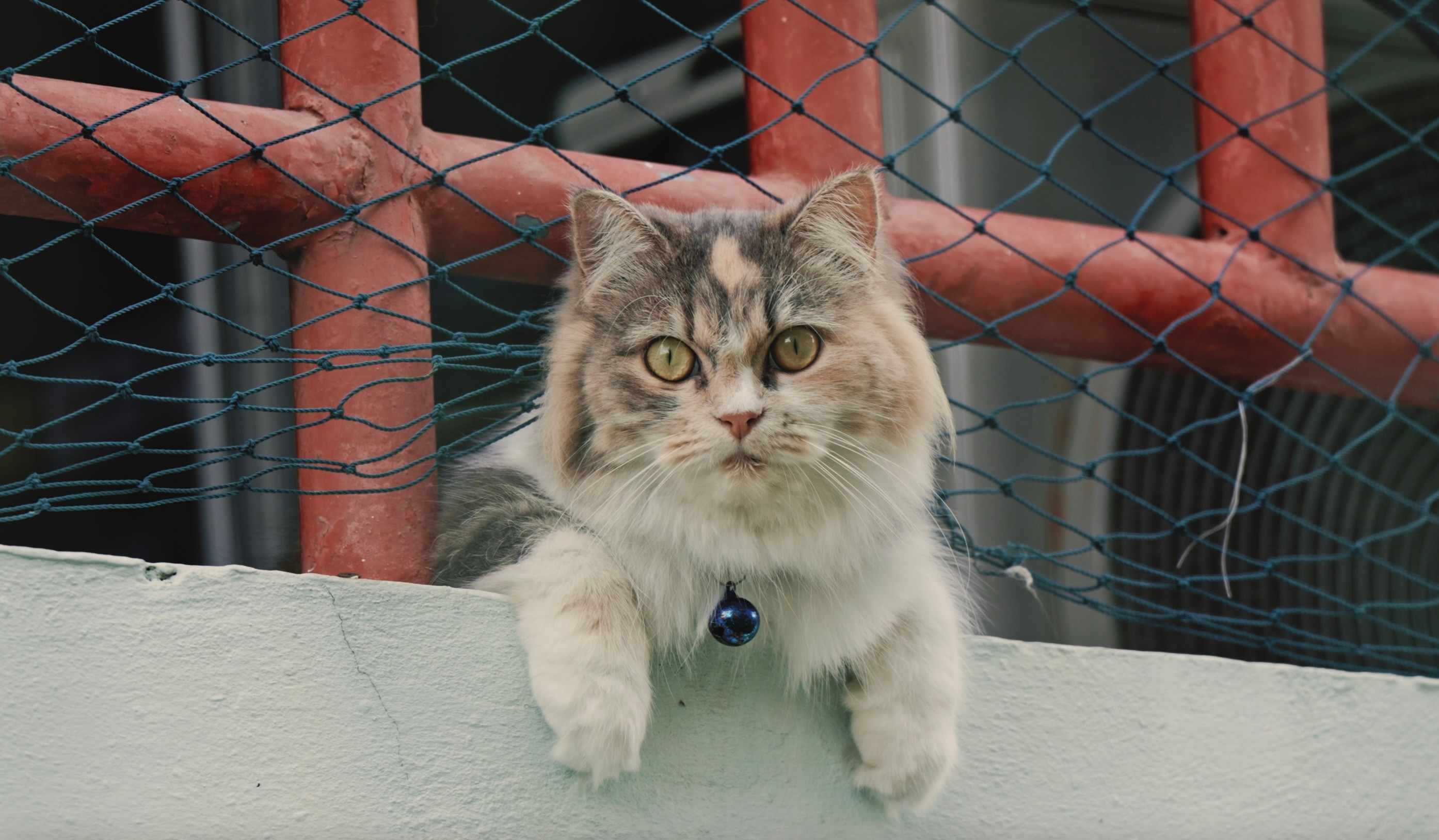 a dilute calico RagaMuffin cat, a fluffy huge cat breed, leisurely lounging on a patio under a protective net, illustrating its relaxed temperament
a dilute calico RagaMuffin cat, a fluffy huge cat breed, leisurely lounging on a patio under a protective net, illustrating its relaxed temperament
Photo by rachasuk/Creatas Video via Getty Images
Weight: 10–20 pounds
Closely related to the Ragdoll, the RagaMuffin shares many of the same endearing qualities, including a gentle temperament and significant size. Like Ragdolls, RagaMuffins are slow to mature, reaching their full-grown size around 4 years old. This fluffy huge cat breed is naturally big-boned and robust, meaning you’ll need to invest in larger cat supplies to comfortably accommodate their size.
Think jumbo-sized everything: cat trees, litter boxes, and carriers designed for large cats are necessities for RagaMuffin owners. As they age, RagaMuffins can be prone to arthritis, making proactive joint health management crucial. Providing proper nutrition and ensuring regular, gentle exercise throughout their lives will support their joint health and overall well-being.
8. American Bobtail: The Playful Bobtailed Breed
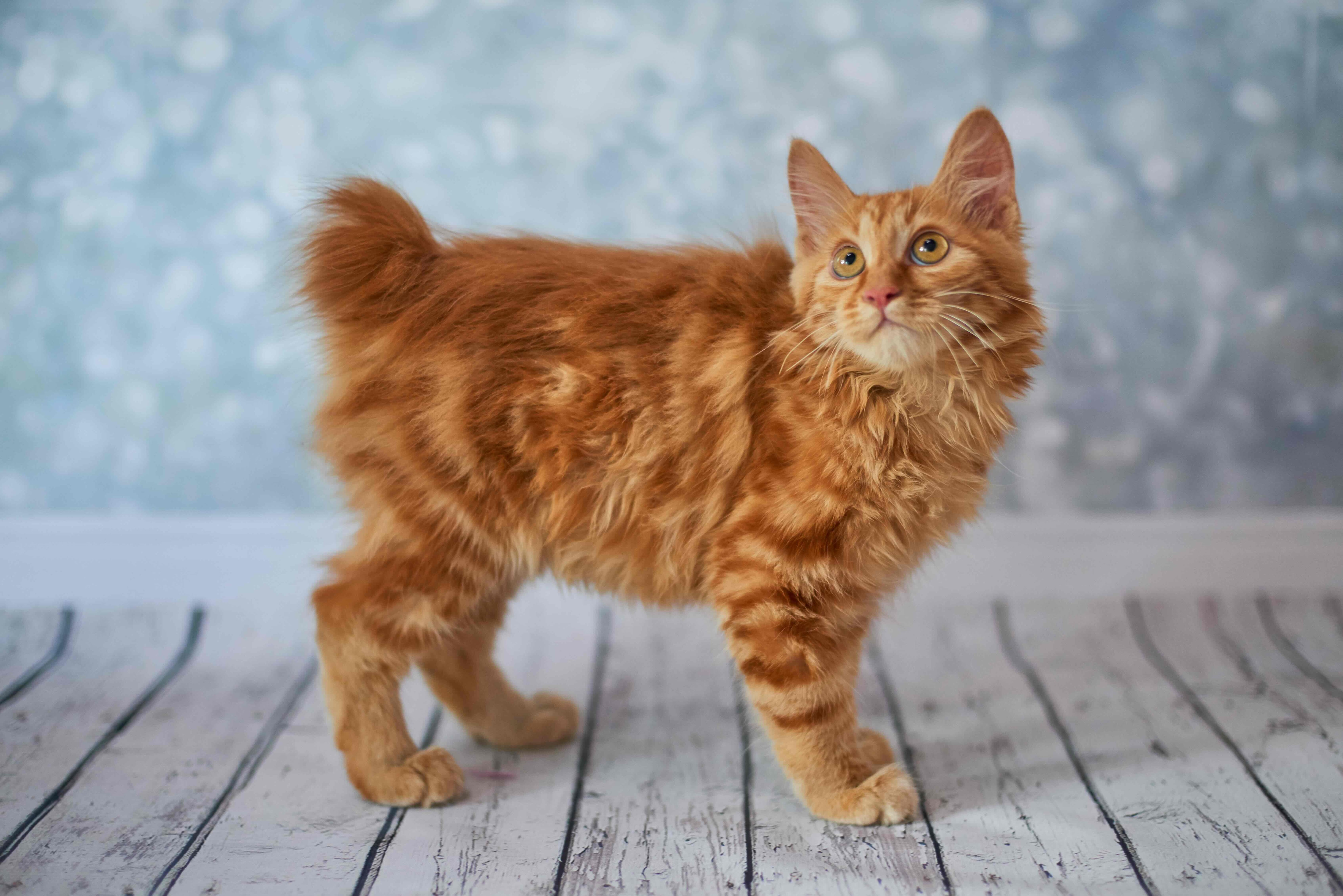 an orange American Bobtail kitten, a cute and fluffy huge cat breed, standing inquisitively and looking upwards
an orange American Bobtail kitten, a cute and fluffy huge cat breed, standing inquisitively and looking upwards
Photo by Adobe Stock/jane_khomi
Weight: 7–16 pounds
The American Bobtail is easily recognized by their distinctive short, “bobbed” tail, from which they get their name. Beyond their unique tail, they are known for being affectionate, active, and intelligent cats. This breed is particularly adept at puzzle feeders, showcasing their cleverness, and many can even be trained to walk on a leash, highlighting their adaptable nature.
However, the genetic mutation responsible for their bobbed tail also predisposes American Bobtails to potential spine and hip issues. To mitigate these risks, feeding them an AAFCO-compliant diet is crucial. Ensuring they maintain an ideal weight through proper nutrition is a key factor in supporting their skeletal health and overall vitality.
9. British Shorthair: The Calm and Plush Companion
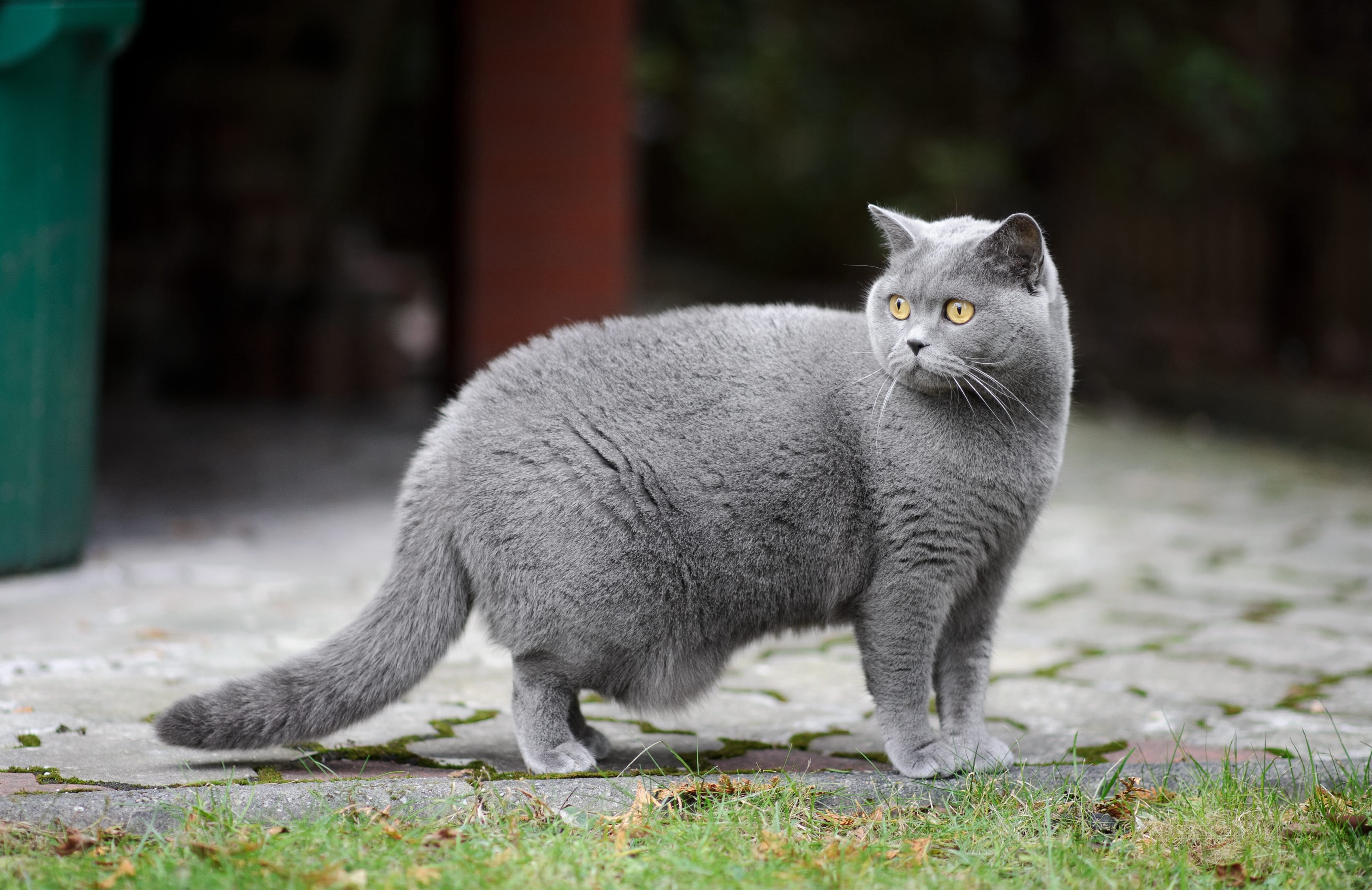 a blue British Shorthair cat, a classic and calm huge cat breed, standing regally outdoors in natural light
a blue British Shorthair cat, a classic and calm huge cat breed, standing regally outdoors in natural light
Photo by Adobe Stock/gilotyna
Weight: 7–17 pounds
The British Shorthair is celebrated for its calm, easygoing, and dignified personality. Characterized by their dense, plush coat and round, teddy-bear-like faces, they are undeniably charming. While not as overtly active as some other breeds, British Shorthairs still need encouragement to stay physically engaged. They are more inclined to lounge than leap, so proactive owners are essential to their well-being.
Interactive toys like feather wands and the allure of catnip can be very effective in motivating them to move and play. Careful portion control at mealtimes and minimizing treats are also important for this breed. Preventing weight gain is crucial as excess weight can put undue strain on their joints, especially as they mature.
10. Turkish Van: The Water-Loving Swimmer
 a Turkish Van cat, a striking and large huge cat breed, sitting and playfully pawing with a dark background highlighting its white coat
a Turkish Van cat, a striking and large huge cat breed, sitting and playfully pawing with a dark background highlighting its white coat
Photo by Nynke van Holten/iStock / Getty Images Plus via Getty Images
Weight: 10–20 pounds
Turkish Vans are a standout among huge house cat breeds, not only for their substantial size but also for their unusual affinity for water. Unlike most cats, Turkish Vans often enjoy playing in water, whether it’s batting at pet water fountains or even investigating the bathtub. These active and intelligent cats thrive on enrichment and stimulation.
Providing tall cat trees, sturdy shelves for climbing, and robust scratching posts are essential for channeling their energy constructively. Regular exercise and interactive play sessions are vital for preventing weight gain and maintaining healthy joints in this breed. Their playful and curious nature makes them engaging companions for owners who can provide them with ample activity and attention.
WRITTEN BY
Shannon Willoby
Freelance Writer
